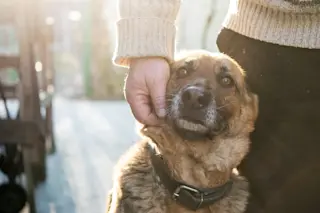In late January, Stephanie Salvago stood outside a mobile home in Walker County, Alabama. She looked over a scene with more than 100 dogs trapped in crowded pens or tethered to short chains. Other dogs had escaped and were running loose.
Salvago was with the Greater Birmingham Humane Society, one of several animal welfare groups the county sheriff’s department asked to help with a dire rescue. Along with an animal control officer, Salvago decided to step inside the house to assess the situation.
“We went in with nothing but our masks,” Salvago says. “We were probably in there for about 45 seconds before we had to exit the house. The fumes were unbearable.”
Inside the house, another 40 dogs were living in their own filth. The rescue team opened windows and began lifting out those that ran up to them. While they waited for firefighters to arrive wearing hazmat suits, ...















